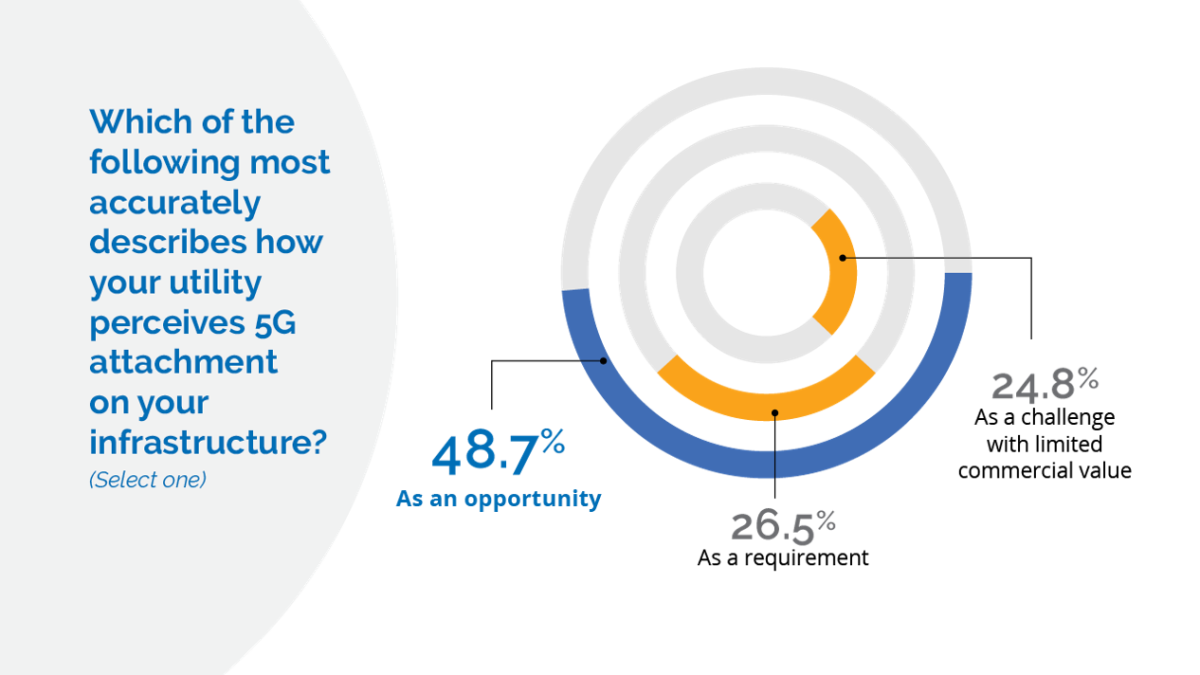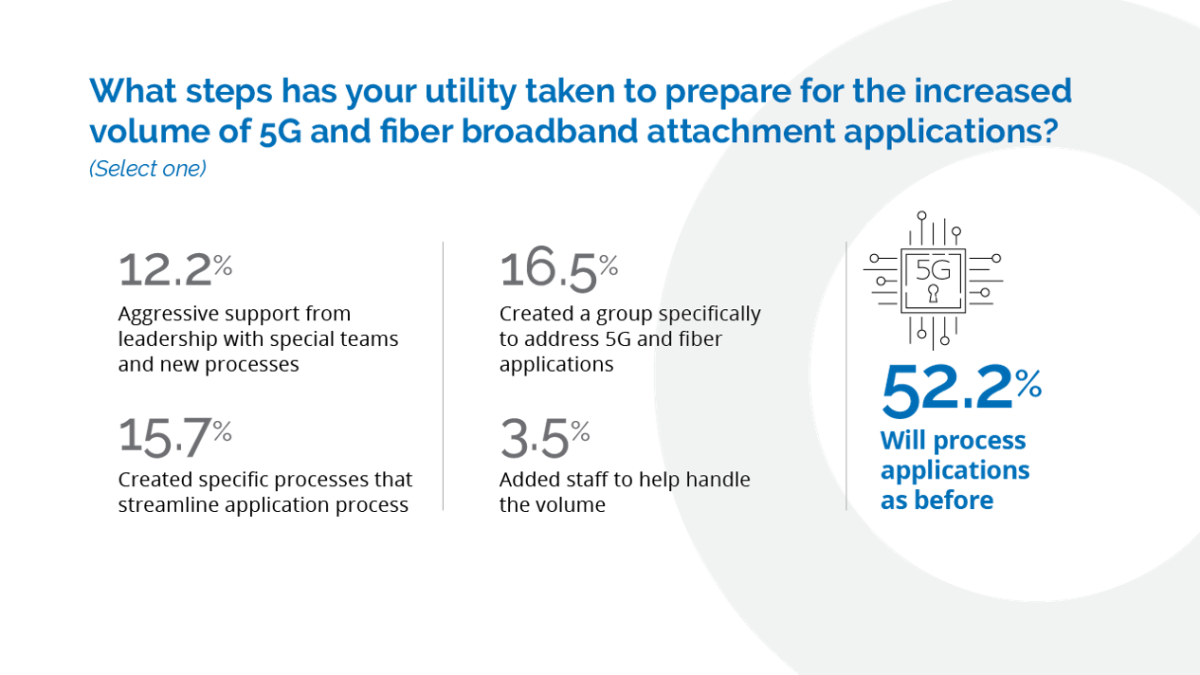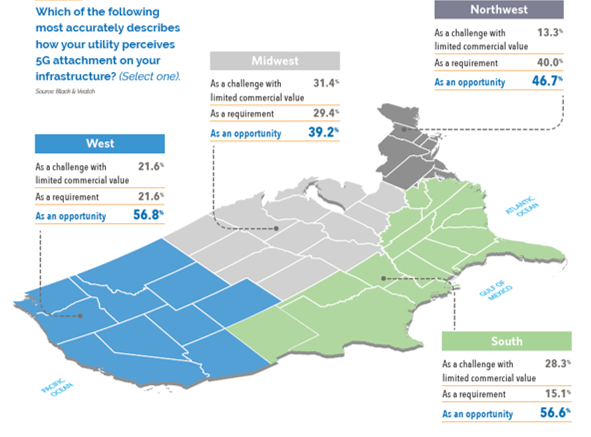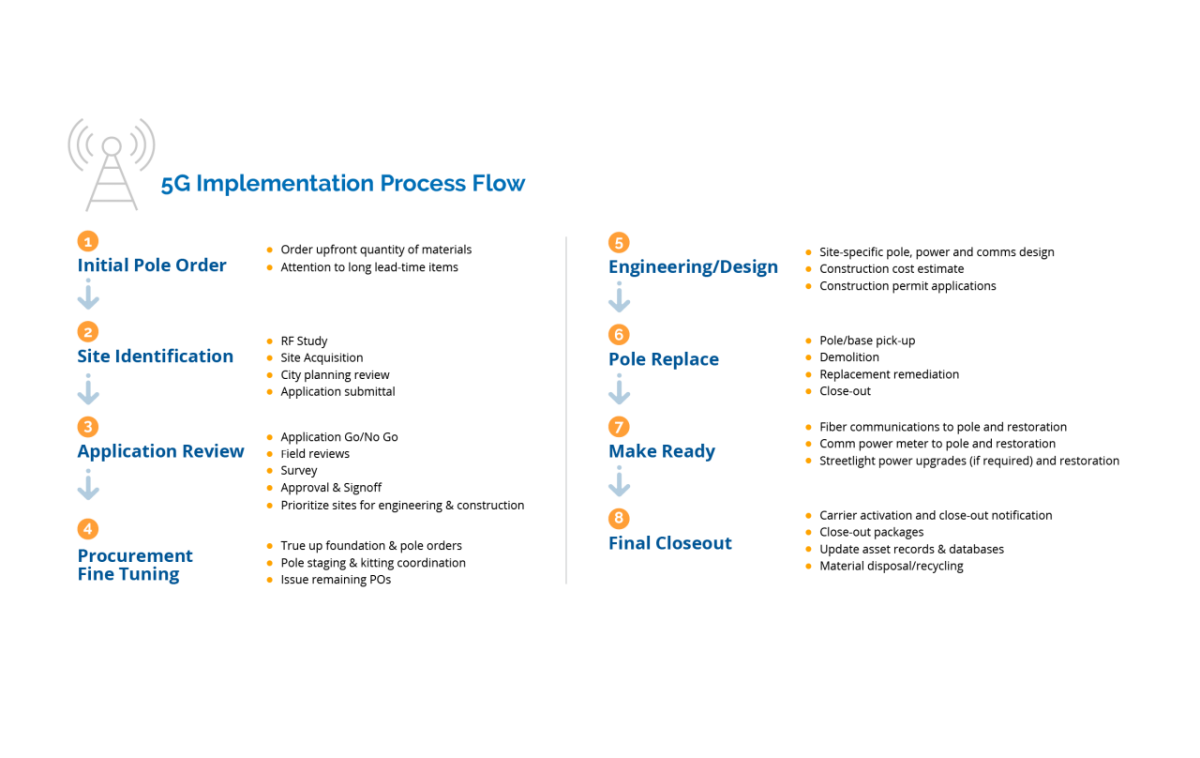5G Implementation Comes Down to Communication, Collaboration
The lure of 5G is strong, but implementing at scale will require extensive collaboration
There’s no doubt that the lure of 5G digitalization is strong. This wave of next-generation connectivity is expected to usher in exciting new opportunities such as wide-scale adoption of the Internet of Things (IoT), along with all its innovative new technologies that promise to change how we live, work and play.
The advent of 5G holds benefit for a myriad of groups. Carriers could see new opportunities for revenue as their role grows across the IoT ecosystem. Utilities would benefit from improved communication capabilities and collaboration with carriers. Communities that support 5G could see improved quality of life along with higher revenue and employment.
Industries that embrace 5G now — such as in energy and transportation — could reap significant cost efficiencies. But setting the allure of 5G aside, the truth is that implementing 5G at scale will require extensive collaboration — particularly among carriers and utilities, not to mention local communities, state and local permitting policies, regulators and technology integrators such as Black & Veatch.
Divided Perspectives on 5G
According to Black & Veatch’s 2020 Strategic Directions: Smart Utilities Report survey, utilities are divided about how they view telecommunications companies attaching 5G equipment such as small cell facilities or distributed antenna systems to their infrastructure. Roughly half (49 percent) of respondents see 5G attachment as an opportunity, bolstered by promises of upgraded infrastructure and improved communication capabilities, not to mention new partnerships with carriers. But of those who responded otherwise, opinions are split as to whether such attachments are a requirement or a challenge with limited commercial value (Figure 22).
There’s no doubt that the issue is complex and multi-sided, and as requests for attachments rise, electric utilities are finding themselves facing increasingly complex challenges.
To handle the increase in attachment applications, a combined 48 percent of respondents said they are actively preparing, either by creating a group specifically to address 5G and fiber applications (17 percent), creating new processes to streamline the application process (16 percent), or enlisting “aggressive support” from leadership (12 percent).
But the remaining 52 percent said they plan to process applications as before, without implementing any additional considerations (Figure 23).
Interestingly, results varied by region. The West and the South presented as the more optimistic regions, with 57 percent in both regions seeing 5G attachment as an opportunity. But of those that disagreed in the South, 28 percent said they see it as a challenge with limited commercial value. This is unsurprising, given the conservatism displayed by Southern utilities when it comes to rate setting.
The Northeast also views 5G attachment primarily as an opportunity (47 percent), followed closely by requirement (40 percent). The Midwest was relatively moderate in its split, with 39 percent choosing opportunity, 31 percent seeing it as a challenge and 29 percent as a requirement (Figure 24).
One Midwestern utility, Municipal Electric Utilities of Wisconsin, makes its position clear on its website, stating: “We have concerns about safely accommodating wireless attachments on our poles and are skeptical that 5G technology actually will be deployed in the small communities most municipal utilities serve.”
Overcoming Challenges
5G implementation is a complicated, multi- stage process that relies on the enthusiastic participation of all parties. Figure 25 provides a high-level overview of the stages and players who need to be involved. A technology integrator such as Black & Veatch can offer unparalleled support in these steps, particularly when it comes to alleviating pressure while still letting carriers and utilities maintain process and control.
All too often, carriers run into a wall when they try to work directly with utilities. It’s no secret that the two groups boast very different cultures, each with their own approaches, methodologies and strategies.
Carriers move fast, particularly when it comes to 5G implementation. 4G networks already are straining to meet current capacity demands, and carriers are working to expand their networks as quickly as possible — both to meet customer demand and to get ahead of the competition.
The century-old electric utility industry is extremely process-driven. Rate-setting and other regulatory reforms are important drivers when it comes to making strategic decisions and deploying new technologies, and utilities must work toward a long-term balance.
But several examples of successful partnerships exist, demonstrating that it is possible for carriers and utilities to navigate a collaborative path forward. Over the past two years, AT&T, Sprint and Verizon all successfully launched standards-based 5G deployment plans in more than a dozen major U.S. cities. T-Mobile recently announced that it will roll out its nationwide 5G network in early December 2020.
How can carriers and utilities duplicate this success?
Communication Is Key
This grand shift toward digitalization and 5G implementation will come down to communication — specifically, the need to communicate with, and across, the utility. Currently, utilities have no way to address the influx of 5G expansion. Carriers must help utilities recognize and understand the opportunity presented by 5G and, more importantly, begin to treat it as such.
Carriers also need to demystify how the revenue is going to work, and outline areas where utilities can benefit from cost savings. For example, carriers are often willing to replace utilities’ aging assets with new and upgraded infrastructure at their own expense, saving utilities and municipalities on replacement and upgrade costs. Utilities rarely have to build anything; they just need to be open to working with carriers.
Collaboration Plays a Role
Successful 5G implementation needs to be approached holistically, not on an ad hoc basis. The effort cannot be disjointed. Every utility has its own hurdles, and each one has a different starting point.
Preventing inertia means getting everybody into the same room. The team promoting 5G as a great opportunity needs to talk to the regulatory and customer management teams and to the carrier team that deals specifically with 5G attachments. Even within the utility itself, leadership needs to empower management to make decisions related to 5G implementation.
This collaboration — and these relationships — will be critical to making 5G implementation a success.
The Work Has Only Begun
5G digitalization offers a path to advanced business and industry processes, founded on a breakthrough communications network and digital infrastructure that will evolve alongside future demands and technology innovation.
But the work to implement 5G at scale has only begun. Between 2020 and 2021, we expect to see mass standards-based 5G rollouts, with a fully optimized 5G standard by 2022. If momentum continues along this path, estimates peg 5G connections in the U.S. at 190 million by 2025.
To help streamline the process, carriers and utilities must agree to work together, and establishing clear communication and collaboration channels will be critical to this effort. A technology integrator such as Black & Veatch can help leverage the benefits of digitalization by integrating technologies and building partnerships that help advance innovation, all while offering untold benefits to the communities it serves.





